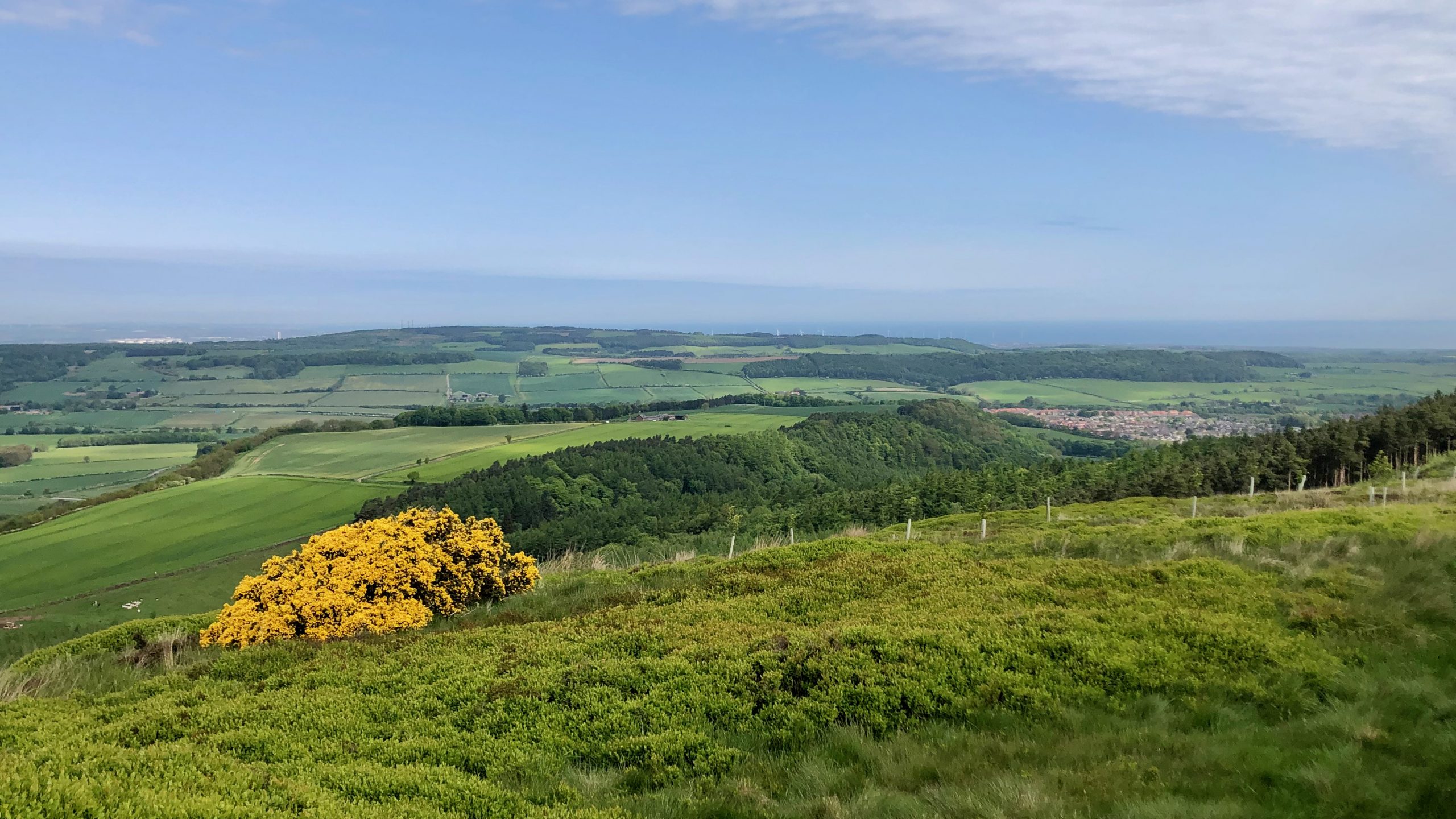Bousdale Farm, perched on the plateau of Bousdale Hill, provides a splendid panoramic view of Guisborough and, in the distance, the North Sea.
Although the farm was likely constructed in the early 1880s, it does not appear on the 1881 census. Apparently, the buildings were initially erected to accommodate Sir Joseph Whitwell Pease’s prized thoroughbred hunters1Burns, Tom Scott. “The Walker’s Guide to the Cleveland Hills”. 1993. Smith Settle. ISBN 1-85825-009-9.. The farm faced difficulties in terms of water supply, which necessitated the implementation of a syphon system. Interestingly, two of its fields were named ‘Boiler Field,’ possibly as a commemoration of the fact that the water tank used on the farm was sourced from the old boiler of the ‘Majestic,’ the first steamship on the Tees2Dixon, Grace. “Two Ancient Townships – Studies of Pinchinthorpe and Hutton Lowcross”. Page 94. ISBN 0 9507827 2 6 1991.
According to the 1853 O.S. Map, there were no farm buildings on the site at that time. The land belonged to the Crown and had been sub-leased to the Moon family since at least the 18th century. It was likely managed from Bousdale House, located at the northern base of the hill. When John Moon passed away in 1833, a report from the previous year indicated that the condition of Bousdale farm was “in a bad state and getting worse every year“. The farm remained with his widow and sons3Dixon, Grace. “Two Ancient Townships – Studies of Pinchinthorpe and Hutton Lowcross”. Page 58. ISBN 0 9507827 2 6 1991.
In 1867, the family relocated to Lowcross Farm, where they resided for almost 40 years, until the death of Richard Moon in 1895. Moon, along with his mother and brother, had farmed at Bousdale House. Pease acquired the land in 1863.
Interestingly, there is historical evidence of a licensed meeting house for dissenters, likely the Quakers, in ‘Bousdale‘ in 1691. However, it is possible that this record was erroneously confused with Scugdale, located on the opposite side of the Guisborough valley. While there are Quaker records pertaining to Scugdale, there are none specifically related to Bousdale. The sparsely populated Bousdale area was partially under the jurisdiction of the See of York and partially sub-tenanted to an Anglican clergyman. It seems unlikely that it served as a venue for dissenters4Dixon, Grace. “Two Ancient Townships – Studies of Pinchinthorpe and Hutton Lowcross”. Page 58. ISBN 0 9507827 2 6 1991.
Finally, the presence of crop-marks, indicating the existence of a round barrow and several ditched enclosures, suggests prehistoric habitation in the area5NYM HER Nos: 7514/19437/19438.
- 1Burns, Tom Scott. “The Walker’s Guide to the Cleveland Hills”. 1993. Smith Settle. ISBN 1-85825-009-9.
- 2Dixon, Grace. “Two Ancient Townships – Studies of Pinchinthorpe and Hutton Lowcross”. Page 94. ISBN 0 9507827 2 6 1991
- 3Dixon, Grace. “Two Ancient Townships – Studies of Pinchinthorpe and Hutton Lowcross”. Page 58. ISBN 0 9507827 2 6 1991
- 4Dixon, Grace. “Two Ancient Townships – Studies of Pinchinthorpe and Hutton Lowcross”. Page 58. ISBN 0 9507827 2 6 1991
- 5NYM HER Nos: 7514/19437/19438

Leave a Reply